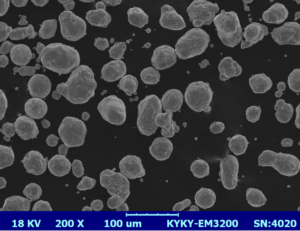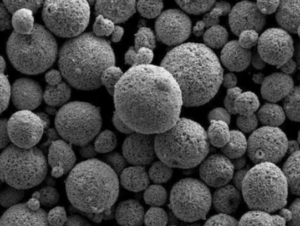لمحة عامة عن تجميع سرير البناء عالي الحرارة
في عالم التصنيع بالإضافة والطباعة ثلاثية الأبعاد، يعد سرير البناء، المعروف أيضًا باسم لوحة البناء، مكونًا حاسمًا. ولكن عندما تتعامل مع مواد الطباعة ذات درجة الحرارة العالية مثل PEEK أو Ultem أو المعادن، فإن سرير البناء العادي لن يفي بالغرض. هذا هو المكان الذي تأتي فيه تجميعات سرير البناء عالي الحرارة. تم تصميم هذه الأسرة المتخصصة لتحمل درجات الحرارة القصوى، مما يضمن التصاق مطبوعاتك بشكل صحيح وعدم تشوهها، حتى في ظل الظروف الأكثر تطلبًا.
تعد أسرة البناء ذات درجة الحرارة العالية أمرًا بالغ الأهمية للتطبيقات الصناعية حيث تكون الدقة والمتانة والاتساق غير قابلة للتفاوض. وهي مصممة من مواد متطورة يمكنها تحمل درجات حرارة تزيد عن 200 درجة مئوية، وغالبًا ما يتم دمجها مع السخانات وأجهزة استشعار درجة الحرارة والمكونات الأخرى التي تساعد في الحفاظ على البيئة المثالية للمادة المحددة الخاصة بك.
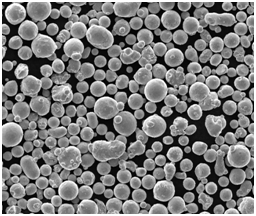
تكوين تجميع سرير البناء عالي الحرارة
يعد فهم تكوين تجميع سرير البناء عالي الحرارة أمرًا أساسيًا لاختيار السرير المناسب لتطبيقك. تتكون هذه التجميعات عادةً من مزيج من المعادن والسيراميك والمركبات، يتم اختيار كل منها لقدرته على التعامل مع الحرارة العالية مع الحفاظ على السلامة الهيكلية.
| المواد | التركيب | الخصائص | أمثلة على الاستخدام |
|---|---|---|---|
| سبائك الألومنيوم | الألومنيوم مع المواد المضافة (مثل 6061، 7075) | توصيل حراري عالي، خفيف الوزن، قوة معتدلة | يستخدم على نطاق واسع في أسرة درجة الحرارة العالية للأغراض العامة |
| الفولاذ المقاوم للصدأ | الحديد والكربون والكروم والنيكل | قوة عالية، مقاومة للتآكل، توصيل حراري أقل | مثالي للبيئات التي تكون فيها المتانة هي المفتاح |
| إنكونيل | سبائك النيكل والكروم الفائقة | مقاومة استثنائية للحرارة، مقاومة للأكسدة | تستخدم في تطبيقات الفضاء والتطبيقات الصناعية عالية الدقة |
| فولاذ الأدوات | الكربون والتنجستن والموليبدينوم | صلبة للغاية، مقاومة للتآكل، تحتفظ بالقوة في درجات الحرارة المرتفعة | مناسب للاستخدامات الشاقة |
| الطلاءات الخزفية | كربيد السيليكون، أكسيد الألومنيوم | مقاومة درجات الحرارة العالية، غير موصلة، مقاومة للتآكل | غالبًا ما تستخدم كطلاء علوي على الأسرة المعدنية |
| مركبات الجرافيت | الجرافيت مع روابط الراتنج | ثبات حراري عالي، توصيل حراري ممتاز، خفيف الوزن | تستخدم لعمليات درجة الحرارة العالية للغاية |
| سبائك النحاس | النحاس مع مواد مضافة مثل الكروم | توصيل حراري ممتاز، توصيل كهربائي عالي | مناسب للتطبيقات التي تتطلب استجابة حرارية سريعة |
| بيك | بولي إيثر إيثر كيتون | نسبة قوة إلى وزن عالية، مقاومة كيميائية ممتازة | شائعة في عمليات الطباعة البلاستيكية المتخصصة |
| Ultem | بولي إيثر إيميد (PEI) | ثبات حراري عالي، مثبط للهب | تستخدم في صناعات الفضاء والسيارات |
| بوليمرات مقواة بألياف الكربون | ألياف الكربون في مصفوفة بوليمر | نسبة قوة إلى وزن عالية، صلبة، مقاومة للتشوه في درجات الحرارة المرتفعة | تستخدم في التطبيقات خفيفة الوزن وذات درجة الحرارة العالية |
خصائص تجميع سرير البناء عالي الحرارة
عند تقييم أسرة البناء ذات درجة الحرارة العالية، من المهم مراعاة خصائصها الرئيسية، والتي ستؤثر بشكل مباشر على جودة مطبوعاتك وطول عمر سرير البناء نفسه.
التوصيل الحراري
يعد التوصيل الحراري أمرًا بالغ الأهمية لتوزيع الحرارة بالتساوي عبر السرير. تتفوق المعادن مثل الألومنيوم والنحاس في هذا المجال، مما يضمن درجة حرارة ثابتة، وهو أمر حيوي لمنع التشوه وضمان الالتصاق المتساوي عبر المطبوعة.
استقرار درجة الحرارة
تم تصميم مواد مثل Inconel والطلاءات الخزفية لتحقيق الاستقرار في درجات الحرارة القصوى. هذه الخاصية ضرورية للصناعات عالية الدقة مثل الفضاء والسيارات، حيث يمكن أن تؤدي حتى التقلبات الطفيفة في درجة الحرارة إلى حدوث عيوب.
المتانة ومقاومة التآكل
تشتهر الفولاذ المقاوم للصدأ والفولاذ الأدوات بمتانتها، خاصة في البيئات التي قد يتعرض فيها سرير البناء للإجهاد المادي، مثل الطباعة الصناعية شديدة التحمل.
خصائص الالتصاق
يجب أن يوفر سطح سرير البناء التصاقًا كافيًا للحفاظ على المطبوعة في مكانها أثناء العملية، ولكن أيضًا يسمح بالإزالة السهلة بمجرد اكتمال المطبوعة. غالبًا ما تستخدم الطلاءات مثل PEI أو الأسطح المصنوعة من الألومنيوم المعالج خصيصًا لهذا الغرض.
| الخصائص | أفضل خيارات المواد | أهمية |
|---|---|---|
| التوصيل الحراري | الألومنيوم، سبائك النحاس | يضمن التسخين المتساوي ويقلل من التشوه |
| استقرار درجة الحرارة | Inconel، الطلاءات الخزفية | يمنع التشوه والعيوب في عمليات درجة الحرارة العالية |
| المتانة | الفولاذ المقاوم للصدأ، فولاذ الأدوات | يضمن طول العمر ويتحمل الإجهاد المادي |
| خصائص الالتصاق | طلاءات PEI، الألومنيوم المحكم | يحسن التصاق المطبوعة، مما يقلل من المطبوعات الفاشلة |
مزايا تجميع سرير البناء عالي الحرارة
إذن، لماذا تستثمر في تجميع سرير البناء عالي الحرارة؟ فيما يلي الفوائد الرئيسية:
الدقة والجودة
تسمح أسرة البناء ذات درجة الحرارة العالية بطباعة المواد عالية الأداء، مما يؤدي إلى أجزاء ذات خصائص ميكانيكية أفضل ومقاومة للحرارة وأداء عام. هذه الدقة ضرورية لصناعات مثل الفضاء، حيث لا يعد فشل الأجزاء خيارًا.
تعدد الاستخدامات
يمكن لهذه الأسرة التعامل مع مجموعة واسعة من المواد، من المواد البلاستيكية الحرارية ذات درجة الحرارة العالية مثل PEEK و Ultem إلى مساحيق المعادن المستخدمة في التلبيد المباشر بالليزر للمعادن (DMLS). هذه القدرة على التكيف تجعلها ضرورية في بيئة طباعة متعددة المواد.
طول العمر
مواد مثل Inconel والفولاذ المقاوم للصدأ متينة بشكل لا يصدق، مما يعني أن سرير البناء الخاص بك سيدوم خلال العديد من دورات الطباعة دون تدهور، حتى في ظل ظروف درجة الحرارة العالية المستمرة.
نتائج متسقة
بفضل التوصيل الحراري والاستقرار الممتازين، توفر هذه الأسرة نتائج متسقة، وهو أمر مهم بشكل خاص للإنتاج الدفعي حيث يجب أن يفي كل جزء بمواصفات صارمة.
| الميزة | الوصف |
|---|---|
| الدقة والجودة | تمكن الطباعة عالية الدقة باستخدام مواد من الدرجة الأولى، وهي أمر بالغ الأهمية للأجزاء الدقيقة |
| تعدد الاستخدامات | متوافقة مع مجموعة واسعة من المواد ذات درجة الحرارة العالية، مما يعزز قدرة الطابعة |
| طول العمر | تضمن المواد المتينة أن سرير البناء يدوم لفترة أطول، مما يقلل من تكاليف الاستبدال |
| نتائج متسقة | توفر الخصائص الحرارية الموثوقة جودة طباعة موحدة، وهي أمر بالغ الأهمية للإنتاج |
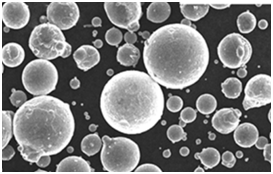


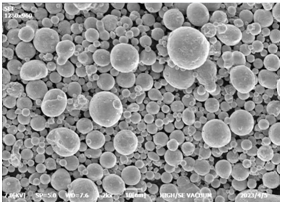
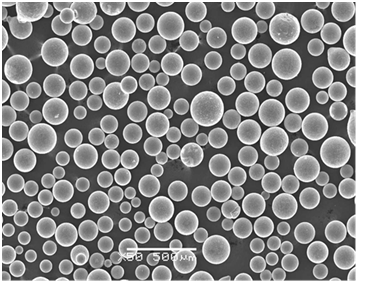

تطبيقات تجميع سرير البناء عالي الحرارة
تُستخدم أسرة البناء ذات درجة الحرارة العالية في مجموعة متنوعة من الصناعات، ولكل منها متطلبات ومعايير فريدة. فيما يلي بعض التطبيقات الأكثر شيوعًا:
| الصناعة | طلب | المواد المستخدمة | المزايا |
|---|---|---|---|
| الفضاء | تصنيع مكونات خفيفة الوزن وعالية القوة | Inconel، ألياف الكربون، PEEK | دقة عالية، مقاومة للحرارة، متانة |
| السيارات | إنتاج أجزاء عالية الأداء مثل مكونات المحرك والدروع الحرارية | الفولاذ المقاوم للصدأ، Ultem | ثبات حراري عالي، قوة ميكانيكية، مقاومة للتآكل |
| الأجهزة الطبية | الغرسات المخصصة والأدوات الجراحية | التيتانيوم، PEEK | التوافق الحيوي، الدقة، التعقيم |
| الإلكترونيات | النماذج الأولية والإنتاج على دفعات صغيرة من لوحات الدوائر المطبوعة والمشتتات الحرارية | سبائك النحاس، السيراميك | توصيل حراري ممتاز، عزل كهربائي |
| النفط والغاز | مكونات للبيئات ذات درجة الحرارة العالية والضغط العالي | Inconel، الفولاذ المقاوم للصدأ | مقاومة التآكل، قوة عالية في درجات الحرارة المرتفعة |
| الدفاع | إنتاج مكونات الأسلحة والأجزاء الأخرى عالية الإجهاد | فولاذ الأدوات، Inconel | متانة قصوى، مقاومة للحرارة، مقاومة التآكل |
| الطاقة | أجزاء للتوربينات والمفاعلات ومعدات إنتاج الطاقة الأخرى | Inconel، الفولاذ المقاوم للصدأ | أداء عالي الحرارة، مقاومة للدوران الحراري |
| السلع الاستهلاكية | عناصر متخصصة مثل المجوهرات المخصصة وإطارات النظارات | الفولاذ المقاوم للصدأ، PEI | المظهر الجمالي، الدقة، المتانة |
| الهندسة المعمارية | أعمال المعادن المخصصة للتطبيقات الهيكلية والديكورية | الألومنيوم، الفولاذ المقاوم للصدأ | السلامة الهيكلية، مقاومة الطقس، المرونة الجمالية |
| الروبوتات | مكونات لأنظمة الروبوتات عالية الأداء | ألياف الكربون، فولاذ الأدوات | خفيف الوزن، قوي، مستقر حراريًا |
المواصفات والأحجام والدرجات والمعايير لتجميعات سرير البناء عالي الحرارة
اختيار الحق مجموعة سرير البناء ذات درجة الحرارة العالية يتطلب الاهتمام بتفاصيل محددة مثل الحجم والدرجة والالتزام بمعايير الصناعة. إليك تفصيل للمواصفات الأكثر شيوعًا:
| المواصفات | التفاصيل | المواد النموذجية |
|---|---|---|
| الحجم | قابلة للتخصيص، تشمل الأحجام الشائعة 300x300 مم، 400x400 مم، 500x500 مم | الألومنيوم، الفولاذ المقاوم للصدأ |
| السماكة | تتراوح من 5 مم إلى 20 مم، اعتمادًا على التطبيق | Inconel، فولاذ الأدوات |
| الصف | تشمل درجات المواد 6061 (الألومنيوم)، 304 (الفولاذ المقاوم للصدأ)، 718 (Inconel) | الألومنيوم، الفولاذ المقاوم للصدأ، Inconel |
| تشطيب السطح | محكم أو مطلي أو مصقول، اعتمادًا على احتياجات الالتصاق | PEI، السيراميك، الألومنيوم |
| قدرات التسخين | يمكن أن تتراوح السخانات المدمجة من 100 درجة مئوية إلى 400 درجة مئوية | PEEK, Ultem, الفولاذ المقاوم للصدأ |
| معايير الامتثال | ASTM، ISO، أو معايير صناعية محددة مثل ASME، FDA للاستخدام الطبي | يختلف حسب الصناعة |
الموردون وتفاصيل التسعير لتجميعات أسرة البناء ذات درجة الحرارة العالية
إليك لمحة عن بعض كبار الموردين في الصناعة، إلى جانب تفاصيل التسعير لمساعدتك على اتخاذ قرار مستنير.
| المورد | المادة المعروضة | نطاق السعر | الملاحظات |
|---|---|---|---|
| McMaster-Carr | الفولاذ المقاوم للصدأ، سبائك الألومنيوم | 100 دولار أمريكي – 500 دولار أمريكي لكل ورقة | جيد لأسرة ذات درجة حرارة عالية للأغراض العامة |
| Protolabs | Inconel، فولاذ الأدوات | 500 دولار أمريكي – 2000 دولار أمريكي لكل مجموعة | تصميمات مخصصة بدقة عالية |
| Grainger | الألومنيوم، الفولاذ المقاوم للصدأ | 200 دولار أمريكي – 800 دولار أمريكي لكل ورقة | تقدم مجموعة واسعة من الأحجام والسماكات |
| الأنظمة ثلاثية الأبعاد | PEEK, Ultem | 1000 دولار أمريكي – 5000 دولار أمريكي لكل مجموعة | متخصصة في أسرة حرارية بلاستيكية عالية الأداء |
| EOS | Inconel، ألياف الكربون | 3000 دولار أمريكي – 10000 دولار أمريكي لكل مجموعة | خيارات متطورة للتطبيقات الصناعية |
| ماركفورجيد | ألياف الكربون، الفولاذ المقاوم للصدأ | 1500 دولار أمريكي – 7000 دولار أمريكي لكل مجموعة | معروفة بأسرتها المصنوعة من ألياف الكربون |
| Stratasys | Ultem, PEEK | 2000 دولار أمريكي – 6000 دولار أمريكي لكل مجموعة | تركز على المواد الحرارية والبلاستيكية المركبة |
| Arcam | تيتانيوم، فولاذ مقاوم للصدأ | 4000 دولار أمريكي – 12000 دولار أمريكي لكل مجموعة | متخصصة في تصنيع المعادن المضافة |
| تجسيد | الألومنيوم، الفولاذ المقاوم للصدأ | 500 دولار أمريكي – 3000 دولار أمريكي لكل مجموعة | التصنيع المخصص مع التركيز على التفاصيل |
| رينيشو | Inconel، الفولاذ المقاوم للصدأ | 3000 دولار أمريكي – 10000 دولار أمريكي لكل مجموعة | تطبيقات طباعة المعادن المتطورة |
مقارنة خيارات تجميع أسرة البناء ذات درجة الحرارة العالية
مع وجود العديد من الخيارات في السوق، كيف تختار؟ إليك مقارنة لمساعدتك على الموازنة بين الإيجابيات والسلبيات:
| المواد | الإيجابيات | السلبيات | الأفضل لـ |
|---|---|---|---|
| سبائك الألومنيوم | خفيف الوزن وموصلية حرارية جيدة | أقل متانة في درجات الحرارة المرتفعة جدًا | طباعة للأغراض العامة |
| الفولاذ المقاوم للصدأ | متينة ومقاومة للتآكل ومستقرة | توصيل حراري أقل مقارنة بالألومنيوم | بيئات عالية الإجهاد |
| إنكونيل | مقاومة استثنائية للحرارة، قوية، مقاومة للأكسدة | باهظة الثمن، أثقل من الألومنيوم أو الفولاذ | الفضاء، التصنيع عالي الدقة |
| فولاذ الأدوات | صلبة للغاية ومقاومة للاهتراء | يمكن أن تكون هشة، خاصة في درجات الحرارة المرتفعة جدًا | تطبيقات صناعية شديدة التحمل |
| الطلاءات الخزفية | مقاومة عالية لدرجة الحرارة، غير موصلة | يمكن أن تكون هشة، باهظة الثمن | الطلاءات لأسرة معدنية في الطباعة ذات درجة الحرارة العالية |
| مركبات الجرافيت | استقرار حراري عالي، توصيل حراري ممتاز | يمكن أن تكون باهظة الثمن، وهشة في بعض التكوينات | عمليات درجة الحرارة العالية القصوى |
| سبائك النحاس | توصيل حراري ممتاز، موصل كهربائيًا | يمكن أن يتآكل إذا لم يتم حمايته بشكل صحيح | التطبيقات التي تتطلب استجابة حرارية سريعة |
| بيك | نسبة قوة إلى وزن عالية، مقاومة كيميائية | باهظة الثمن، تقتصر على الطابعات المتطورة | طباعة بلاستيكية متخصصة |
| Ultem | ثبات حراري عالي، مثبط للهب | باهظة الثمن، تقتصر على تطبيقات صناعية محددة | الفضاء، تطبيقات السيارات |
| بوليمرات مقواة بألياف الكربون | خفيفة الوزن، قوية، مقاومة للتشوه | يمكن أن تكون باهظة الثمن، وحجم طباعة محدود | تطبيقات خفيفة الوزن وعالية الحرارة |
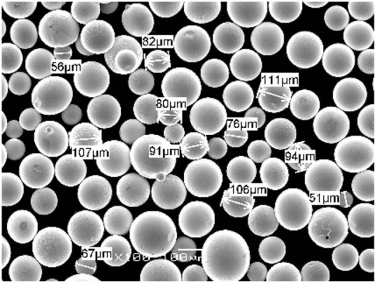
التعليمات
إليك قسم الأسئلة الشائعة السريع لمعالجة بعض الأسئلة الشائعة:
| سؤال | الإجابة |
|---|---|
| ما هي أقصى درجة حرارة يمكن لهذه الأسرة تحملها؟ | يعتمد ذلك على المادة، ولكن بشكل عام، يمكن لأسرة البناء ذات درجة الحرارة العالية التعامل مع درجات حرارة تصل إلى 400 درجة مئوية أو أكثر. |
| هل يمكنني استخدام سرير بناء عالي الحرارة للطباعة ثلاثية الأبعاد القياسية؟ | نعم، ولكن قد يكون مبالغًا فيه ما لم تكن تطبع بمواد ذات درجة حرارة عالية مثل PEEK أو Ultem أو المعادن. |
| كيف يمكنني صيانة سرير البناء عالي الحرارة الخاص بي؟ | يعد التنظيف والفحص المنتظم للتآكل أو التلف أمرًا بالغ الأهمية. بالنسبة للأسرة المعدنية، قد تكون هناك حاجة إلى إعادة الظهور من حين لآخر. |
| هل هناك فرق كبير في جودة الطباعة؟ | بالتأكيد! يمكن لسرير البناء المناسب أن يحسن بشكل كبير التصاق الطباعة، ويقلل من الاعوجاج، وينتج عنه مطبوعات أكثر سلاسة ودقة. |
| هل تستحق أسرة البناء ذات درجة الحرارة العالية الاستثمار؟ | إذا كنت تعمل بمواد ذات درجة حرارة عالية أو تتطلب دقة في التطبيقات الصناعية، فإن الاستثمار يستحق ذلك بالتأكيد. |
| هل يمكنني تعديل طابعة قياسية باستخدام سرير بناء عالي الحرارة؟ | نعم، ولكن تأكد من أن البرامج الثابتة والأجهزة الخاصة بالطابعة يمكنها دعم الحمل الحراري المتزايد. |
| هل تتطلب هذه الأسرة مواد لاصقة خاصة؟ | قد تتطلب بعض المواد مواد لاصقة معينة، بينما يعتمد البعض الآخر على ملمس السطح أو الطلاء للالتصاق. |
| إلى متى تدوم أسرة البناء هذه؟ | مع الصيانة المناسبة، يمكن أن تدوم أسرة البناء ذات درجة الحرارة العالية لسنوات، ولكن هذا يعتمد على المادة وتكرار الاستخدام. |
خاتمة
تعد تجميعات أسرة البناء ذات درجة الحرارة العالية مكونًا حيويًا لأي شخص يشارك في الطباعة ثلاثية الأبعاد عالية الأداء أو الصناعية. سواء كنت تطبع باستخدام PEEK أو Ultem أو المعادن أو مواد أخرى تتطلب ذلك، فإن هذه الأسرة توفر الاستقرار الحراري والمتانة والدقة اللازمة لتحقيق نتائج عالية المستوى. الاستثمار في الحق مجموعة سرير البناء ذات درجة الحرارة العالية لا يضمن الجودة الأفضل للطباعة فحسب، بل يطيل أيضًا عمر الطابعة ويقلل من تكرار المطبوعات الفاشلة. مع المجموعة الواسعة من المواد والتكوينات المتاحة، هناك تجميع لسرير البناء عالي الحرارة يناسب كل تطبيق، مما يجعله اعتبارًا حاسمًا لأي إعداد طباعة ثلاثية الأبعاد جاد.
